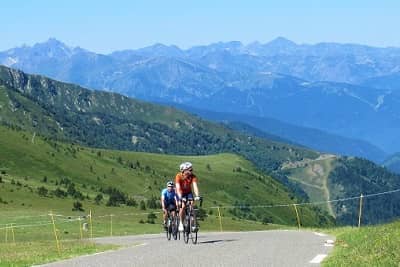Col du Tourmalet: Great Climbs of the Pyrenees
The anticipation rises as you turn left into Luz-Saint Sauveur. The beautiful Luz Ardiden looms imperiously to your right, but it will have to wait - you have bigger
things on your mind. You pass the congregation of cyclists in the town square - an excited chattering of different languages about to converge on their Mecca.
As you loop to your left you catch a glimpse of the small white sign detailing the 19km that stand between you and the greats of cycling. The kilometres begin to fly by; the excitement and adrenaline in following in the tracks of Fausto Coppi and Eddy Merckx act like a strong tailwind ushering you along the tree lined lanes.
Before you know it you have reached the village of Bareges; suddenly the road kicks up and you feel the lactic acid coursing through your veins. Your legs begin to feel heavy, but you power through Bareges waiting for the gradient to ease up so that you can recover. But it doesn't ease up.
The trees disappear and the mountains become ever more prominent. The beautiful shades of green shimmer all around, with the bright sunshine illuminating the road as it snakes around corners and between peaks.
You breathe in the pure mountain air and keep turning the pedals, gliding over the famous names painted onto the road: Pogacar - Froome - Alaphilippe - Van Aert - all pass beneath you as the kilometres tick down. The sheep and cows in the fields watch you lazily as you hover at your anaerobic threshold - they are oblivious to the symbolic importance of their home.
Finally you pass the sign indicating 1km to go; a wave of excitement rushes over you and your cadence picks up. The hairpins become tighter and the gradient kicks up - riders whizz past you in the opposite direction but you barely notice them. With one final push you stand on the pedals, and then, out of nowhere, the statue of the Giant appears.
You crawl to the top of Col du Tourmalet; elated and full of endorphins as you look back behind you to the beautiful scene below. The road unfurls for 7km beneath you, with the small dots in the distance now following in your tracks, trying to achieve their own piece of cycling fulfilment.
The longer climb, from Luz-Saint Sauveur, is 19km at an average gradient of 7.4%; the last kilometre is the steepest with an average gradient in excess of 10%. While these figures may not seem so intimidating, given the recent emergence of more extreme routes like Zoncolan and Angliru; Tourmalet has historically been, and remains, one of the toughest climbs in the Tour de France.
The climb from Campan is a little shorter, but with a final 10km averaging nearly 9%!
The legend of Tourmalet, however, is rooted as much in its beauty and history as in its difficulty. It perfectly characterises the rugged green landscape of the Pyrenees - often bathed in bright sunshine and with seemingly endless peaks and valleys extending into the distance in all directions. Tourmalet is also the gateway to many other superb climbs. Col d'Aubisque is only a few kilometres to the west, and the ski stations of Luz Ardiden and Hautacam can be found very close to the town of Luz-Saint Saueveur. The east side of Tourmalet also has fine scenery, leading towards the Col d'Aspin and Hourquette d'Ancizan.
Elsewhere nearby you can also tackle monster climbs like Cirque Gavarnie and Col de Troumouse, which are within a comfortable day's riding.
Col du Tourmalet is a climb that entices cyclists from around the world and it does not disappoint. The scenery, the history and the sense of accomplishment provide the most compelling reasons to tackle a climb described by Eddy Merckx as 'the most legendary Col in the Pyrenees'.
It is also crossed on our more demanding Pyrenees: Coast to Coast tour. It is a real pleasure to ride a road which has been such a key part of Tour de France history and legend for over one hundred years.
Check out details below of the holidays that we run in the area, or return to our Guides & Articles or mountain profiles to find out about more of the great cycling climbs in this part of the world!
As you loop to your left you catch a glimpse of the small white sign detailing the 19km that stand between you and the greats of cycling. The kilometres begin to fly by; the excitement and adrenaline in following in the tracks of Fausto Coppi and Eddy Merckx act like a strong tailwind ushering you along the tree lined lanes.
Before you know it you have reached the village of Bareges; suddenly the road kicks up and you feel the lactic acid coursing through your veins. Your legs begin to feel heavy, but you power through Bareges waiting for the gradient to ease up so that you can recover. But it doesn't ease up.
The trees disappear and the mountains become ever more prominent. The beautiful shades of green shimmer all around, with the bright sunshine illuminating the road as it snakes around corners and between peaks.
You breathe in the pure mountain air and keep turning the pedals, gliding over the famous names painted onto the road: Pogacar - Froome - Alaphilippe - Van Aert - all pass beneath you as the kilometres tick down. The sheep and cows in the fields watch you lazily as you hover at your anaerobic threshold - they are oblivious to the symbolic importance of their home.
Finally you pass the sign indicating 1km to go; a wave of excitement rushes over you and your cadence picks up. The hairpins become tighter and the gradient kicks up - riders whizz past you in the opposite direction but you barely notice them. With one final push you stand on the pedals, and then, out of nowhere, the statue of the Giant appears.
You crawl to the top of Col du Tourmalet; elated and full of endorphins as you look back behind you to the beautiful scene below. The road unfurls for 7km beneath you, with the small dots in the distance now following in your tracks, trying to achieve their own piece of cycling fulfilment.
Tourmalet in Numbers
Col du Tourmalet is, along with Mont Ventoux and Alpe d'Huez, one of the three great cycling climbs. The pass, the highest road in the Central Pyrenees, has been crossed in the Tour de France over eighty times - making it by far the most used climb in the history of the Tour.The longer climb, from Luz-Saint Sauveur, is 19km at an average gradient of 7.4%; the last kilometre is the steepest with an average gradient in excess of 10%. While these figures may not seem so intimidating, given the recent emergence of more extreme routes like Zoncolan and Angliru; Tourmalet has historically been, and remains, one of the toughest climbs in the Tour de France.
The climb from Campan is a little shorter, but with a final 10km averaging nearly 9%!
The legend of Tourmalet, however, is rooted as much in its beauty and history as in its difficulty. It perfectly characterises the rugged green landscape of the Pyrenees - often bathed in bright sunshine and with seemingly endless peaks and valleys extending into the distance in all directions. Tourmalet is also the gateway to many other superb climbs. Col d'Aubisque is only a few kilometres to the west, and the ski stations of Luz Ardiden and Hautacam can be found very close to the town of Luz-Saint Saueveur. The east side of Tourmalet also has fine scenery, leading towards the Col d'Aspin and Hourquette d'Ancizan.
Elsewhere nearby you can also tackle monster climbs like Cirque Gavarnie and Col de Troumouse, which are within a comfortable day's riding.
Col du Tourmalet is a climb that entices cyclists from around the world and it does not disappoint. The scenery, the history and the sense of accomplishment provide the most compelling reasons to tackle a climb described by Eddy Merckx as 'the most legendary Col in the Pyrenees'.
Cycling The Pyrenees
The Col du Tourmalet is one of the undoubted highlights of our Best of the Pyrenees Cycling Holiday. This tour is designed for cyclists who wish to tackle some of the most famous climbs in cycling, without necessarily needing the fitness of a club cyclist. The daily distances are kept quite short to make the tour more widely accessible, with optional extensions each day for those cyclists who wish to push themselves further.It is also crossed on our more demanding Pyrenees: Coast to Coast tour. It is a real pleasure to ride a road which has been such a key part of Tour de France history and legend for over one hundred years.
Check out details below of the holidays that we run in the area, or return to our Guides & Articles or mountain profiles to find out about more of the great cycling climbs in this part of the world!
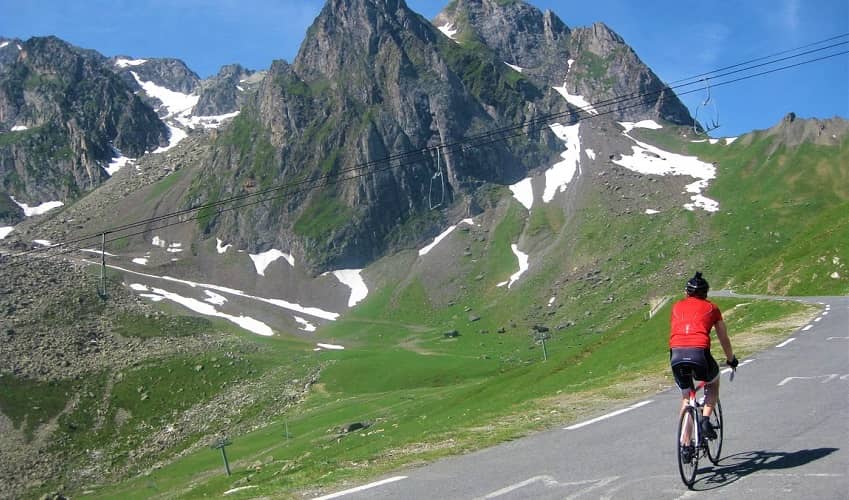
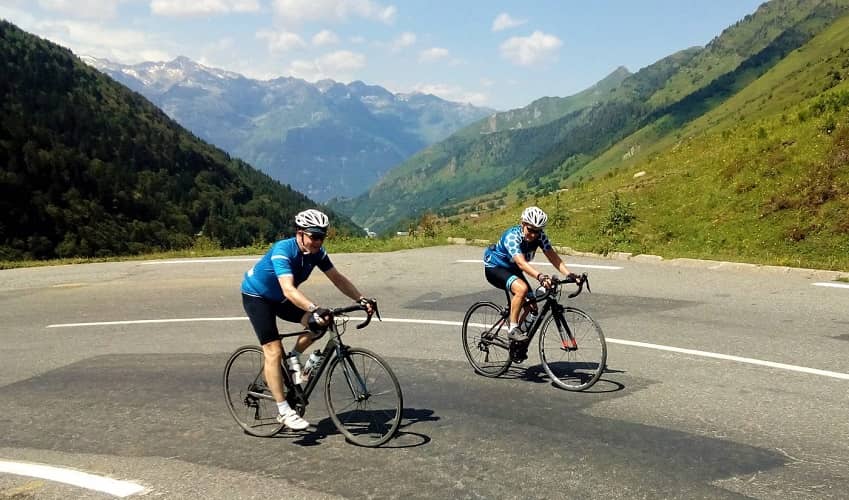
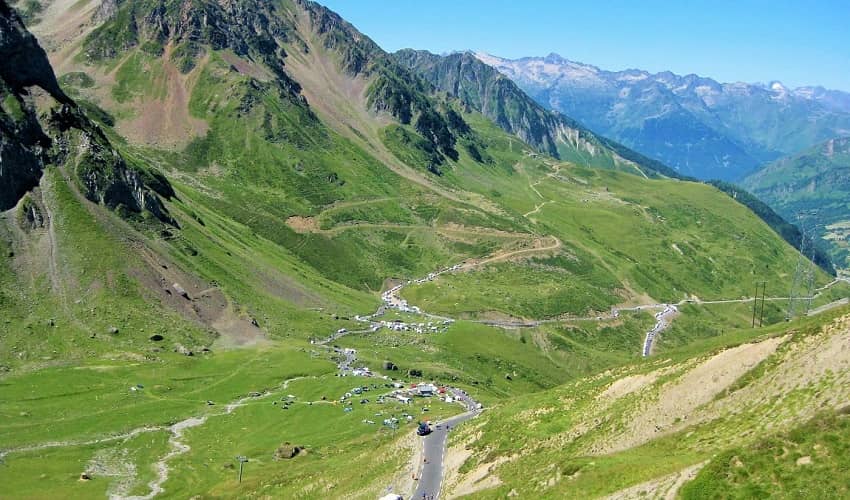
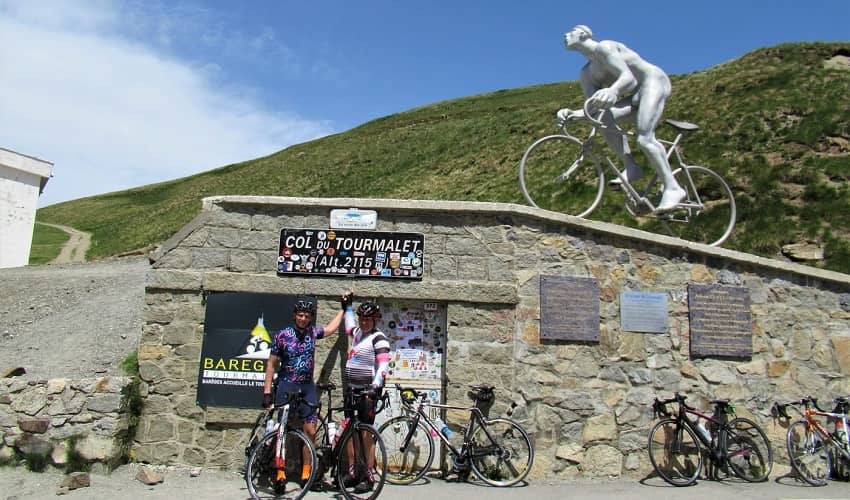
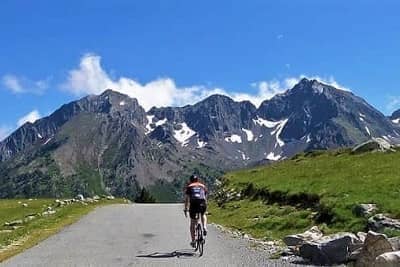
 France
France
